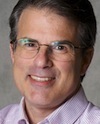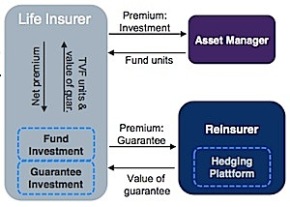
MetLife survey elicits plan sponsor views on stable value funds
Most (82%) of defined contribution (DC) plan sponsors who are familiar with the U.S. Securities & Exchange Commission’s (SEC) amendments to the rules governing money market funds (MMF) feel that stable value is a more attractive capital preservation option for plan participants than money market funds, according to MetLife’s 2015 Stable Value Study, released this week.
Most of the stable value fund providers and advisors who were interviewed for the study and are familiar with MMF reforms predicted that the use of money market funds in defined contribution plans would decline over the next few years. A full report examining these findings is available at www.metlife.com/stablevaluestudy2015.
MetLife Stable Value Fund has a one-year return of 2.51%, an annual expense ratio of 62 basis points, an average duration of 4.2 years and an average credit quality of AA-. Its assets are invested primarily in corporate bonds (34%), mortgage-backed securities (22%) and Treasuries (21%).
In the survey, plan sponsors gave several reasons for offering stable value funds: to provide a capital preservation option (65%); a guaranteed rate of return (50%); better returns than money market and other capital preservation options (49%).
Among plans with more than 100 participants that added stable value in the past two years, 77% offer stable value because it offers better returns than money market and other capital preservation options, up significantly from 38% in the MetLife 2013 Stable Value Study. Only 17% of plan sponsors and 23% of plan advisors knew that stable value returns have exceed inflation over the past 25 years, however.
The study found that almost half of sponsors (47%) are unaware that stable value returns have outperformed money market returns: 22% believe that stable value and money market returns have been about equal and 21% don’t know how the returns compare. Additionally, 4% actually believe that money market funds have performed better than stable value over this time period.
In addition to these reforms, recent litigation would also likely affect plan sponsors’ decisions about which capital preservation products to make available to DC plan participants, the MetLife release said.
Six months after a $62 million class action settlement, followed by a recent U.S. Supreme Court ruling in Tibble v. Edison, 20% of plan sponsors said they are considering alternatives to money market, according to the study.
To conduct the research, MetLife engaged Greenwald & Associates and Asset International, Inc., publishers of PLANSPONSOR and PLANADVISER magazines. Three separate studies were conducted: An online survey of 205 plan sponsors conducted in June 2015, as well as in-depth phone interviews with 20 stable value fund providers and nine advisors during July 14 to August 28, 2015. Assets under management for plans included in the study ranged from under $10 million to $2.5 billion or more.
New Genworth tool prevents “NIGO” applications
Time is money, of course, and contract applications that contain fatal errors—so-called “Not In Good Order” or NIGO applications—can eat up time. Often requiring resubmissions, they can sap the productivity of insurers and brokers as they try to put new business on the books.
To reduce the frequency of NIGOs, Genworth has launched a free electronic platform “designed to help financial professionals improve the accuracy of fixed annuity applications, boost productivity and improve the customer experience,” according to a Genworth release.
The platform, called the Annuity Smart Application Process, or ASAP, is designed for use with Genworth’s SecureLiving Index 10 Plus, SecureLiving Index 7, SecureLiving Index 5, and SecureLiving Growth+ with Income Choice rider.
The forms used in the electronic platform are identical to the paper application process, eliminating any potential learning curve for financial professionals already familiar with the traditional forms.
ASAP reduces application errors with these functions:
- Numbers Check: An auto-fill component that checks users’ math as they navigate the application, especially when they use different crediting strategies that require multiple calculations.
- Help Bubbles: Explanatory pop-ups provide guidance in the most complex sections of the application.
- Form Rules: Based on form entry, fields will be opened (or closed) for completion, and the correct form package will be added to the application.
Mark Madgett to lead New York Life agency division
New York Life has appointed Mark Madgett, a senior vice president, to its executive management committee, which assists CEO Ted Mathas in setting company policy.
Madgett will succeed the retiring Mark Pfaff as head of the insurer’s 12,000-agent Agency Department on January 1, 2016, reporting to New York Life president John Kim.
Madgett, 54, joined New York Life as an agent in Colorado in 1986. He moved into sales management in Denver in 1992, becoming managing partner of New York Life general offices in the state of Washington in 1998 and moving to the home office in 2014. He holds a B.S. in business from Saint Mary’s College of California.
TIAA-CREF survey shows impact of advisors
Only 58% of the men and just 37% of the women in New York State feel confident that they are saving enough money to last throughout their retirement, according to TIAA-CREF’s annual Advice Matters survey.
Overall, 52% of state residents say they have never sought professional financial advice, compared to a national average of 47%. TIAA-CREF conducted identical surveys in New York State and at a national level.
More than a third (36%) of New York residents who haven’t worked with a professional financial advisor say they don’t think they have enough money to do so. Overall, more 51% of New York residents and 45% of Americans believe they need at least $50,000 in savings to justify meeting with an advisor.
The survey found that New York respondents who have met with a financial advisor are significantly more confident in their retirement savings planning than those who haven’t (79% versus 52%).
New York residents who received professional financial advice reported they subsequently re-allocated their retirement accounts (39%), saved more (31%), spent less (27%), or checked their accounts more frequently (30%).
New Yorkers who have discussed retirement with an advisor are much more likely to have calculated how much income they will need in retirement (74% versus only 39% of those who have not met with an advisor). Eighty percent of those who have met with an advisor have discussed ways to turn their savings into monthly income upon retirement, and 47% have acted on those recommendations.
About half (51%) of New Yorkers said they believe they will need less than 75% of their current income in retirement, TIAA-CREF found.
AARP and friends fight move to tax retirement income in Illinois
A bill filed this week in the Illinois House would block taxation of retirement income, which has been proposed as a revenue solutions for the state’s budget crisis—part of which comes, ironically, from inadequate public pension funding.
House Resolution 890 was filed by state representative David McSweeney (R-Barrington Hills) and endorsed by AARP Illinois, which has 1.7 million members.
Illinois has the second-highest average property taxes in the nation, at $3,939, second only to New Jersey’s $3,971, according to an AARP release.
Different folks want different (benefit) strokes: MassMutual
Preferences for workplace benefits such as 401(k) plan matches, health insurance coverage and paid vacation days vary by age and gender, according to a new study by MassMutual.
Overall, 47% of American workers age 18 and older prefer more vacation time, while 44% preferring better 401(k) matches, according to the 2015 MassMutual Generations@Work Study. Men tend to prefer more time off while women focus on health-related benefits.
Half of all Boomers surveyed (50%) and 48% of Millennials said they would opt for more vacation days if they could, according to the study. Nearly half of Gen Xers (47%) prefer better 401(k) matches, with more vacation days coming in a close second (44%), MassMutual found.
Generational preferences
Forty-three percent of Boomers want better 401(k) matches, 38% want free healthcare coverage, and 24% want more investment choices in their retirement plans, according to the study. Four in 10 (43%) want expanded healthcare benefits.
Unlike Boomers, Millennials would like flexible work schedules (43%) and reimbursements for education and tuition (30%). Gen-Xers and Boomers want better 401(k) matches.
He said, she said
Men want more vacation time (50%), better 401(k) matches (43%) and flexible work schedules (39%). Women want more vacation (44%), better 401(k) matches and flexible work schedules (40%), expanded healthcare premiums (37%). Men and women diverged regarding free gym memberships (men: 20%; women: 31%), education/tuition reimbursement (men: 18%, women: 27%), and more investment choices for retirement (men: 18%, women: 11%).
Study specifics
According to the study, the benefits Americans would most like to receive from their employer were as follows:
New benefits tool
Earlier this year, MassMutual launched MapMyBenefits, an online tool that enables employees to prioritize their benefits choices. More recently, the insurer introduced BeneClick!, a benefits exchange that allows online enrollment in an employer’s retirement plan, healthcare coverage, insurance protection products and others.
KRC Research conducted the study for MassMutual as part of an employee benefits education initiative. KRC surveyed 1,517 working Americans who were at least age 18 in a wide variety of jobs and industries.
Public pensions still recovering from Great Recession
Average one-year investment returns of 11%, lower amortization periods, and gradual recovery from the 2008 market crash have all contributed to an increase in the average funding level of state local and provincial government pension funds, according to the 2015 NCPERS Public Retirement System Study.
The study, conducted by the National Conference on Public Employee Retirement Systems and Cobalt Community Research, covered 179 state, local and provincial government pension funds with more than 13.5 million active and retired members and with assets exceeding $2.0 trillion. Two-thirds of the plans (68%) were local pension funds and the rest were state pension funds.
Funds had an average funded level of 74.1%, up from 71.5% in 2014. (Fitch Ratings considers 70% funding to be adequate.) Respondents’ overall confidence rating was 8.0 on a 10-point scale, up from 7.9 in 2014 and 7.4 in 2011.
As of the summer of 2015, funds saw average 11.2% for one-year investments (down from14.5% in 2014); 10.7% for three-year investments (up from 10.3% last year); 11.2% for five-year investments (up from 9.8% last year); 7.0% for 10-year investments (versus 7.6%), and 8.5% for 20-year investments (up from 8.1% last year.)
The total average cost to administer funds and pay investment managers declined to 60 basis points from 61 a year earlier. Public pension funding came from member contributions (7%), employer/government contributions (19%) and investment returns (75%). The totals exceed 100% due to rounding.
© 2015 RIJ Publishing LLC. All rights reserved.










